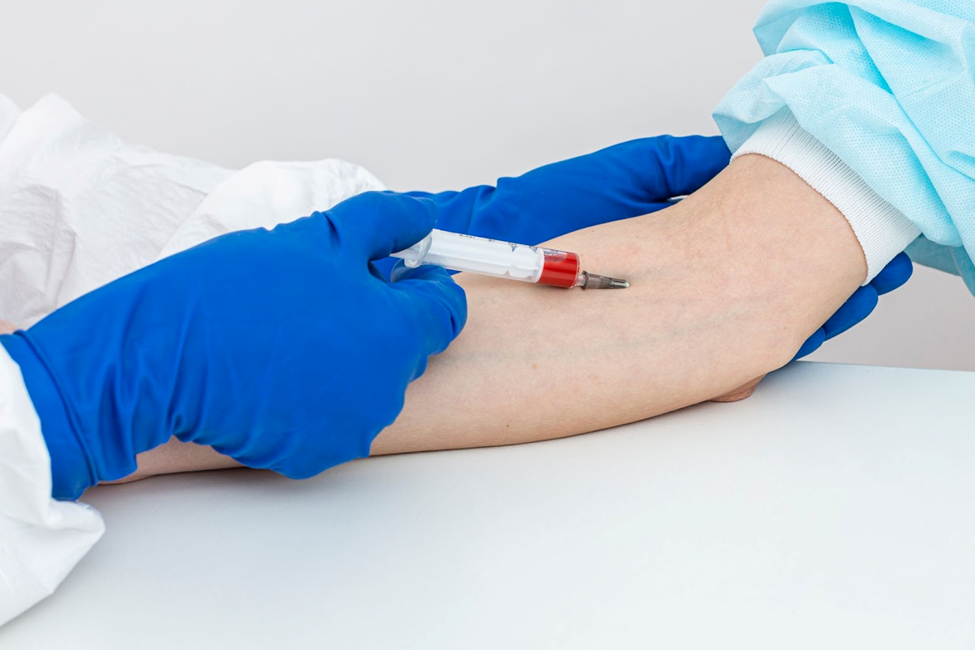Online CPR Certification Blog
What are Needlestick Injuries?
Date: March 11th, 2024
This isn’t just any injury; it’s a needle stick injury. A tiny puncture, yet it can carry risks from blood or other body fluids on the needle. And while you might associate this mostly with doctors or nurses, it’s not exclusive to them.
Even those who handle hospital waste or laundry, like janitors, face this hazard. It’s a reminder of the unsung risks many face in healthcare environments.
The Significance of the Threat
Let’s break it down a bit. When you get a needle stick injury, it’s not just about the pinch or the sting. That tiny prick might expose you to some pretty nasty stuff, like HIV, Hepatitis B, and Hepatitis C.
Think about it – nearly 385,000 times a year, healthcare workers in US hospitals have these heart-sinking moments with needles and other sharp tools. And here’s the really concerning part: a lot of these incidents slip under the radar and don’t even get reported. It’s like these silent risks that many face, yet often go unheard.
How Do They Happen?
Needlestick injuries, though unintentional, often arise from common practices in healthcare settings. Here’s a closer look:
- Recapping a Needle
Many think of recapping as a safe move. However, missing the cap and pricking the hand is a frequent and avoidable mishap. It’s a practice strongly discouraged in healthcare.
- Improper Disposal
Instead of safely placing used needles in sharps containers, sometimes they’re carelessly left on trays or tossed in trash bins. This poses risks not just for medical staff but others who might come into contact with them.
- Handling Trash or Linens:
Janitorial and laundry staff, though not directly involved in patient care, can encounter discarded needles in trash bags or tangled in linens, posing unexpected hazards.
- Patient Care:
In high-stress or emergency situations, the urgency can lead to accidental pricks. Even routine care poses risks, especially if a patient moves suddenly.
Immediate Steps Post-Injury
If you do get pricked, don’t panic. Follow these steps:
- Dispose of the Needle Safely: First things first, make sure no one else gets injured.
- Clean the Wound: Wash the area with soap and water. Do not squeeze the wound.
- Seek Medical Attention: Depending on the source, you may need post-exposure prophylaxis.
Reporting is Crucial
It’s essential to report any needlestick injury, no matter how minor it may seem. Reporting helps track these incidents and improve safety protocols.
It’s also essential for your health – you need to be checked for potential infections and followed up with. Anonymous reporting systems can help create a safe space for honest reporting without fear of reprisal.
Prevention: Avoiding the Prick
Prevention is key. Here are some steps to avoid needlestick injuries:
- Use Safety Devices: Needles with safety features can significantly reduce injuries.
- Get Proper Bloodborne Pathogen Training: Workshops on safe needle handling are invaluable.
- Dispose Properly: Always use puncture-resistant containers for disposal.
- No Recapping: A cardinal rule in all needle safety training.
Psychological Impacts
Beyond the physical risks, a needlestick injury can be emotionally traumatic. The fear of infection and the stress of waiting for test results can take a toll. It’s essential to seek counseling and peer support in these times.
Global Initiatives: A World without Needlestick Injuries
Initiatives like the World Health Organization’s (WHO) Safe Injection Global Network aim to reduce needlestick injuries worldwide. Many countries have laws making safety devices mandatory. Research continues to find even safer medical equipment.

Alt tag: Image of nurse drawing blood from a patient illustrating the risk of bloodborne pathogens
Author credit: By Marjory Collins – This image is available from the United States Library of Congress' s Prints and Photographs.
Let’s hear from James, a seasoned nurse who’s seen it all: “In my 15 years of nursing, I’ve had a few needlestick injuries.
The fear of contracting a disease was the worst part. But with support from my colleagues and employer, I made it through. Now I make it a point to mentor younger nurses about needle safety.”
Conclusion: More Than a Surface Scratch
In the grand scheme of things, a needlestick injury may seem like a small scratch, but it carries a world of consequences with it. It’s a multi-faceted issue that needs a comprehensive approach – medical, psychological, and societal. And it’s everyone’s responsibility to ensure a safe environment for all.
FAQs
What is a needlestick injury?
A needlestick injury is an accidental puncture wound caused by a needle or other sharp medical instruments, potentially exposing individuals to blood-borne pathogens.
How common are needlestick injuries?
In the US, about 385,000 needlestick and sharps-related injuries occur annually among healthcare workers in hospitals. However, many incidents go unreported.
What should I do if I get a needlestick injury?
Dispose of the needle safely, clean the wound with soap and water (avoid squeezing), and seek medical attention. Depending on the source of the needle, you may need post-exposure prophylaxis.
How can needlestick injuries be prevented?
Use safety devices, get proper training on safe needle handling, dispose of needles properly in puncture-resistant containers, and avoid recapping needles.
What are the psychological impacts of needlestick injuries? A needlestick injury can cause immediate stress due to the fear of infection and long-term anxiety while waiting for test results. Seeking counseling and peer support can help cope with the emotional impact.